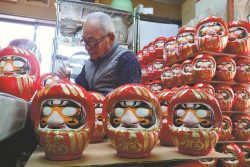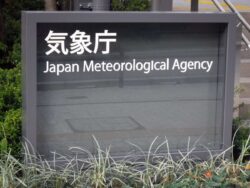Japan Begins Circulating New Banknotes; New Bills Contain Advanced Anti-counterfeiting Measures (UPDATE 1)
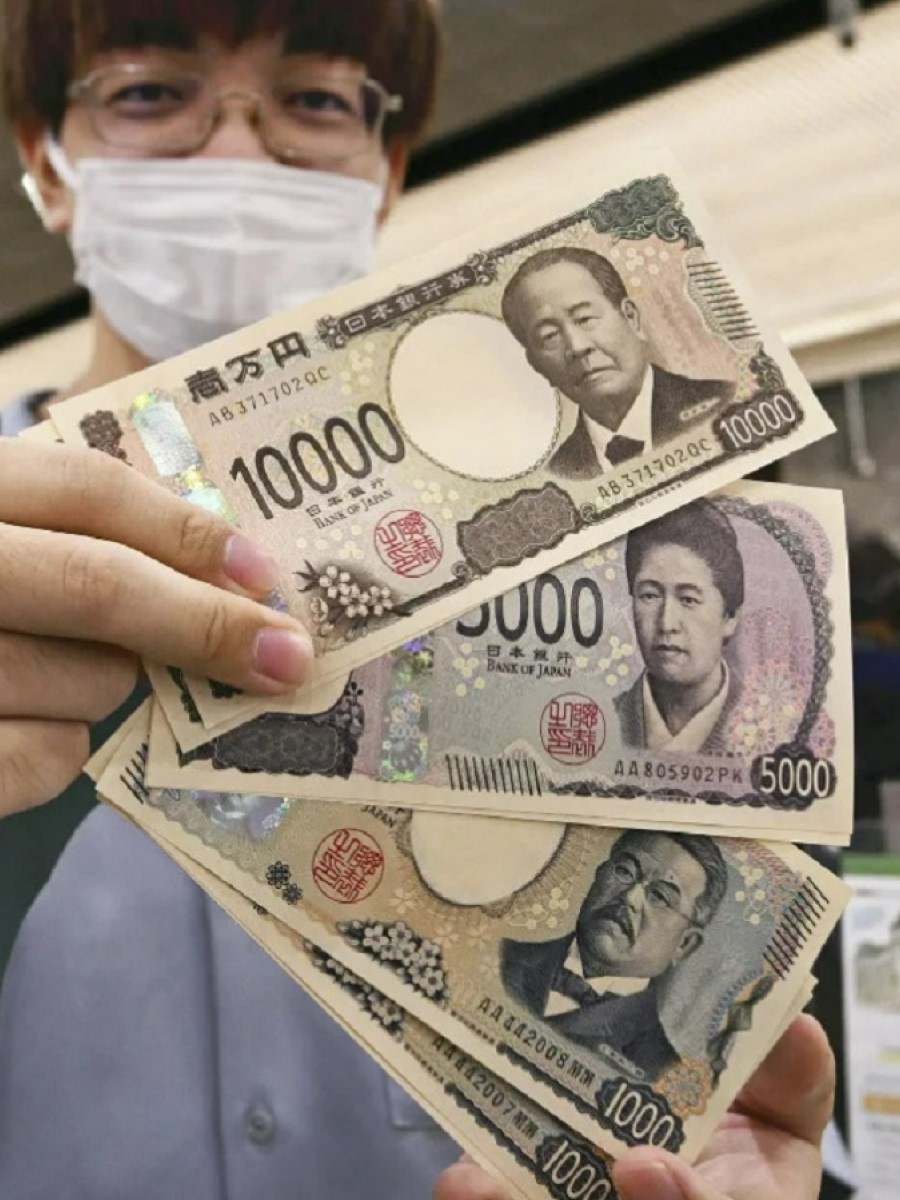
A customer shows off new banknotes at a bank in Saitama on Wednesday.
13:20 JST, July 3, 2024 (updated at 17:30 JST)
The Bank of Japan began delivering newly designed banknotes to financial institutions on Wednesday, marking the first renewal in 20 years.
The new banknotes will be available at financial institution counters and ATMs once they are ready.
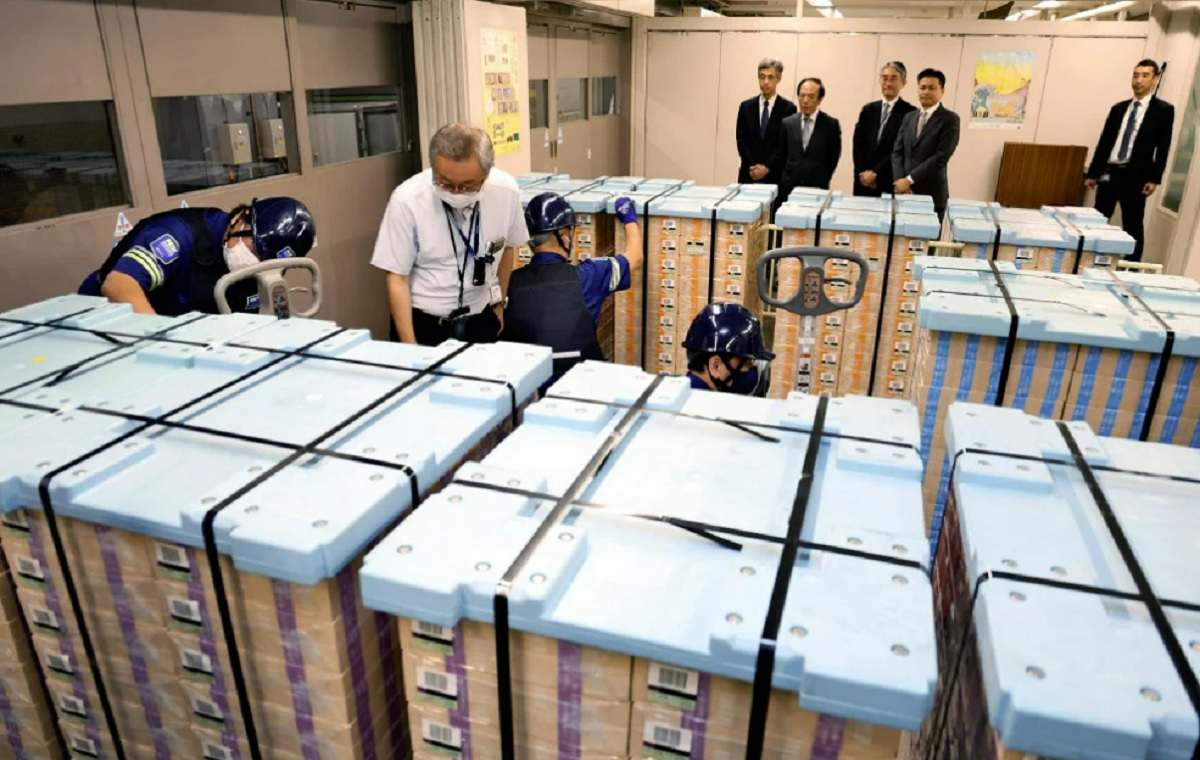
New banknotes being prepared for delivery at Bank of Japan in Chuo Ward, Tokyo, on Wednesday morning.
Shortly after 8 a.m. on Wednesday, one-meter-tall stacks of the newly designed bills were loaded into a security vehicle at the BOJ’s head office in Chuo Ward, Tokyo, as a BOJ official instructed the staffers to “begin issuing the new BOJ banknotes.”
BOJ Gov. Kazuo Ueda said, “I hope the new banknotes will be widely distributed to the public and help lubricate the wheel axles of the economy,”
The new ¥10,000 bill features Eiichi Shibusawa, known as “the father of Japanese capitalism,” and the new ¥5,000 bill bears a portrait of Umeko Tsuda, a pioneer of women’s higher education in Japan. Bacteriologist Shibasaburo Kitasato is the face of the new ¥1,000 bill.
Advanced anti-counterfeiting technologies have been introduced with the banknote renewal. They include a type of 3D hologram technology that makes the banknote portrait appear to rotate when viewed from different angles.
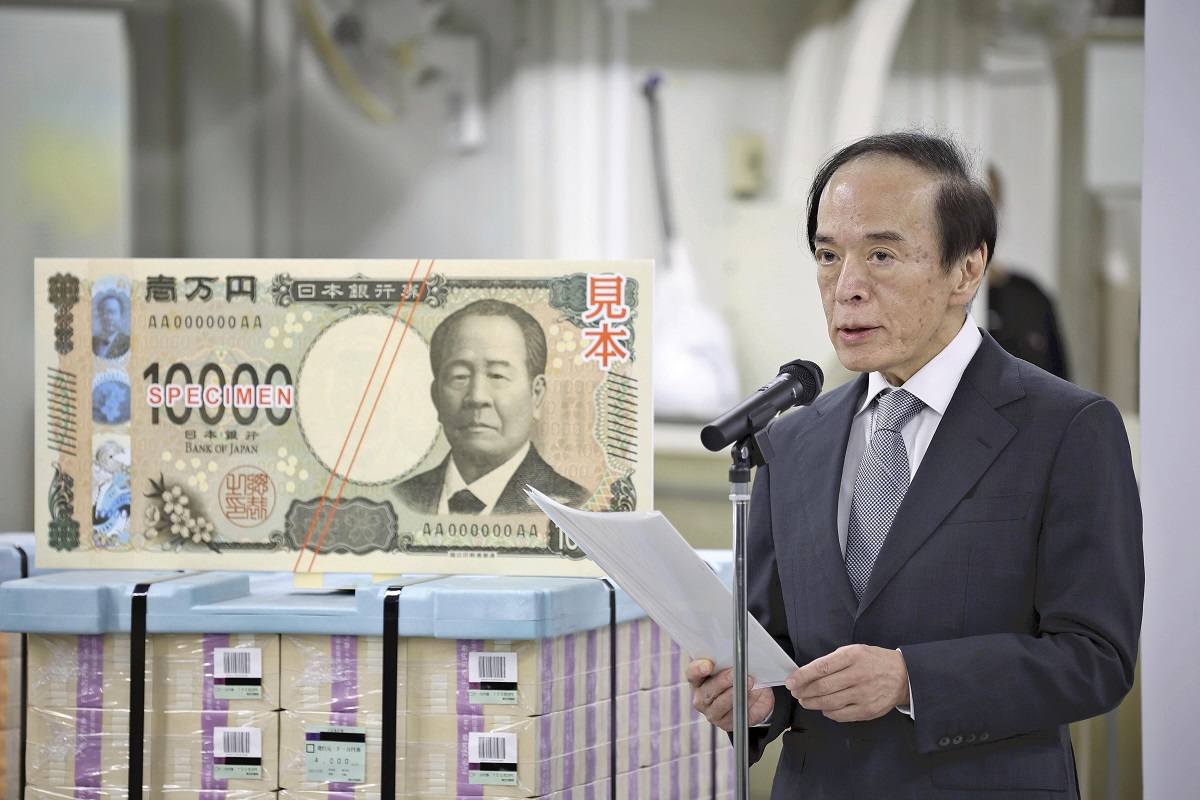
Bank of Japan Gov. Kazuo Ueda speaks at the start of the issuance of new banknotes at the BOJ’s head office in Chuo Ward, Tokyo, on Wednesday morning.
The National Printing Bureau is expected to deliver about 7.5 billion banknotes to the BOJ’s head office and branches by the end of March 2025.
Prime Minister Fumio Kishida visited the head office on Wednesday morning to inspect the issuance of the banknotes.
Afterward, he attended a press conference with Ueda, saying: “The new banknotes are suitable for the new era. I hope the public will receive them well and vitalize the economy.”
Some financial institutions began handling the banknotes on Wednesday, but the three megabank groups — Mitsubishi UFJ Financial Group, Inc., Sumitomo Mitsui Financial Group, Inc. and Mizuho Financial Group, Inc. — said they will begin handling them at their branches on or after Thursday in principle.
Hometowns celebrate
A ceremony commemorating the change of the portrait on the ¥10,000 bill from Yukichi Fukuzawa to Shibusawa was held Wednesday morning at the Tokyo Stock Exchange.
The event was hosted by hometowns of Fukuzawa and Shibusawa, Nakatsu in Oita Prefecture and Fukaya in Saitama Prefecture, respectively.
The mayors mixed local sake from their cities into a kettle-like vessel, poured into two cups and drank together. and then recited the spirit of Fukuzawa and Shibusawa before ringing a bell to pray for the prosperity of the Japanese economy.
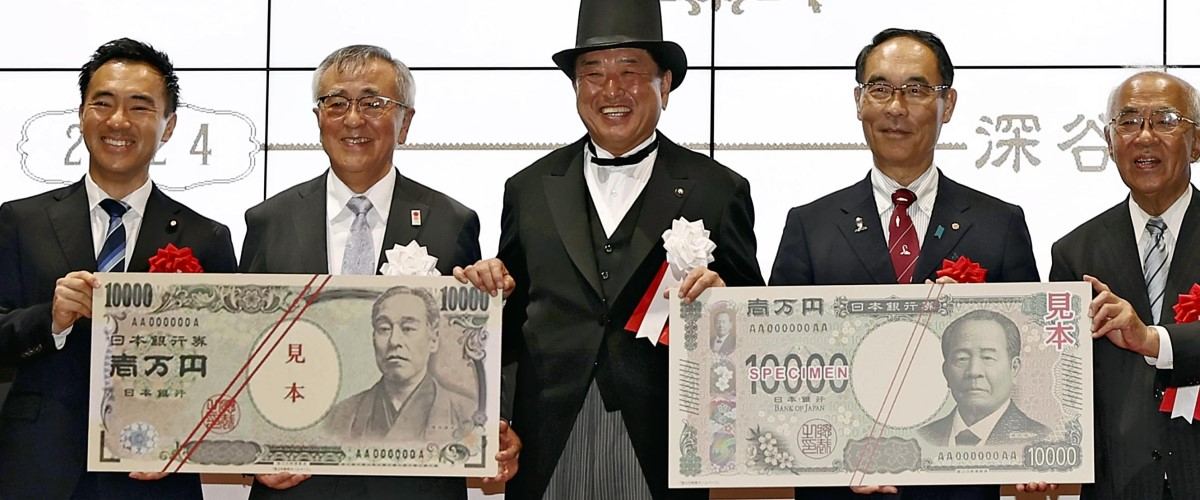
Nakatsu Mayor Masanori Okuzuka, second from left, Fukaya Mayor Susumu Kojima, third from left, and others pose at a ceremony marking the change of the portrait on the ¥10,000 bill held at the Tokyo Stock Exchange in Chuo Ward, Tokyo, on Wednesday.
In Fukaya, a countdown event was held at the city center from Tuesday night, and more than 300 residents and other people gathered to celebrate the issuance of the new ¥10,000 bill. As the clock struck midnight, cheers and shouts congratulating the issuance of the new bills were heard, and a traditional decorative paper ball was split open.
Tsuda, whose portrait is on the new ¥5,000 bill, is the founder of Tsuda College, the predecessor of Tsuda University.
On Wednesday, the university held a commemorative talk event at Tokyo Gymnasium adjacent to the university’s Sendagaya Campus in Shibuya Ward. President Yuko Takahashi exchanged opinions with former Japanese women’s national soccer team member Mana Iwabuchi, 31, among others about women’s activities on the international stage.
Flags depicting the face of the new ¥1,000 bill were seen throughout tourist spots and along a national highway in Oguni, Kumamoto Prefecture, where Kitasato was born.
Trying to capitalize on this occasion, the town is selling related products, such as junmai sake with labels that resemble the new ¥1,000 bill and rice crackers branded with the new ¥1,000 bill.
"Society" POPULAR ARTICLE
-

M4.9 Earthquake Hits Tokyo, Neighboring Prefectures
-

Israeli Tourists Refused Accommodation at Hotel in Japan’s Nagano Pref., Prompting Protest by Israeli Embassy and Probe by Prefecture
-

M7.5 Earthquake Hits Northern Japan; Tsunami Waves Observed in Hokkaido, Aomori and Iwate Prefectures
-

Tsukiji Market Urges Tourists to Avoid Visiting in Year-End
-
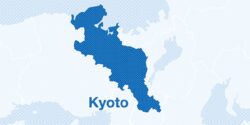
High School in Kyoto Says Students Shoplifted during Recent School Trip to Bali, Indonesia
JN ACCESS RANKING
-

Tokyo Economic Security Forum to Hold Inaugural Meeting Amid Tense Global Environment
-

Keidanren Chairman Yoshinobu Tsutsui Visits Kashiwazaki-Kariwa Nuclear Power Plant; Inspects New Emergency Safety System
-

Imports of Rare Earths from China Facing Delays, May Be Caused by Deterioration of Japan-China Relations
-

University of Tokyo Professor Discusses Japanese Economic Security in Interview Ahead of Forum
-

Japan Pulls out of Vietnam Nuclear Project, Complicating Hanoi’s Power Plans



